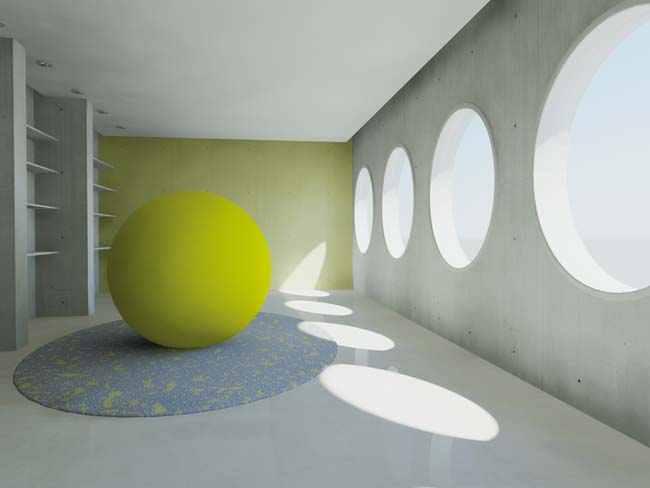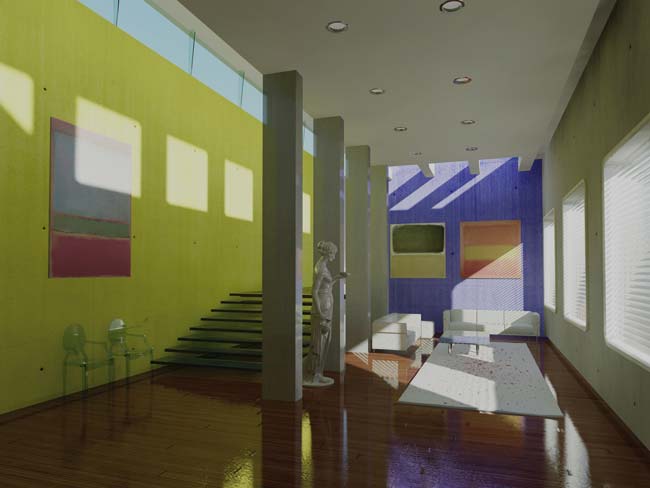Fluid Engineering Limited produces highly developed structural designs by applying advanced 3D analysis software and a great deal of experience. The way software is integrated into the practice is key to the companyÝs award winning performance. By Nick Lerner
Fluid Structures, which was granted an Institute of Structural Engineers Award for the Glass Pavilion, London, has been commissioned to produce designs across a range of large and small projects for domestic, corporate, academic and institutional clients. Of FluidÝs Glass Pavilion the judges commented ý exceptional engineering is immune to scale¯ and a current project is proving an example that nicely illustrates the point.
Having cut his structural engineersÝ teeth on radical new towers in Dubai, Manhal Ibrahim is among 20 Structural Engineers at Fluid. Several of the team are working on the small but fiendish problem of how to preserve the top two floors of a historic St. Johns Wood Villa, install a giant basement and underground swimming pool while removing most of the ground floor internal walls.

Manhal takes up the story, ýThere are many elements to this project which are complex because of their interdependency. For example a 300 sq. m concrete floor pad, to be supported by contiguous 4m deep concrete supports, when fully installed, must have temporary support, while the basement is dug out, to retain structural integrity.¯ He cites another example. ýSteelwork flexion must be very tightly controlled to preserve the substantial brick structure above, meanwhile, budgetary and aesthetic constraints require minimising the steelwork.¯
Removing the temporary pad supports presented more complication while the discovery of one of North LondonÝs lost rivers just beyond the swimming had also to be factored in. The enviably big swimming pool, at 4m deep presents its own problems of wall thickness and possibilities of heave come into play when it is empty.
The Finite Element analysis for the work on this house is handled in-house. The company uses Robot Millennium software, which the practice has been using since before the Glass Pavilion, London project.
See through solutions
Fluid StructureÝs Founding partner, David Crookes, explains how the software fits with the firmÝs work. ýThe structures that we devise are concurrently designed and analysed using Robot. The software allows FE (Finite Element analysis) results to be factored into designs as soon they are solved. That means we are able to consider several alternative, but always structurally compliant, design options.¯ ýThe St. Johns Wood Villa, presents in a microcosm, many of the challenges that we encounter on other projects,¯ continues Crookes. ýOur ability to solve the structural design needs for one job lead us to better solutions on others. Robot is used as a repository for much of this work and from our databases we can reference a growing library of project solutions and outcomes.
{mospagebreak}

ýUsing Robot Millennium as a design and analysis tool helps not only with the actual design, but also with communicating it to clients, contractors, planners and other stake holders. They can see the design in 3D and assess it from their own perspective and needs. This helps to reduce everybodyÝs risk and means that non-technical people can get involved too.¯
Uplifting light
Designing in glass has become a speciality at Fluid. An ability to design and analyse, and thereby to optimise, glass designs, has become a matter of course at the practice. Crookes explains. ýGlass is a fantastic material to work with. Large sheets up to 6 x 3 sq. m are readily available and becoming more common in domestic refurbishments as people see the possibilities that are on offer. Glass, when used in sympathetic combination with massing creates uplifting environments that people enjoy. Glass is developing from a secondary building material into a primary one.
ýAdding large sheets of glass to the construction palette produces a range of new challenges. Using RobotÝs software tools we can use thinner glass over bigger spaces and compare the performance of several sheet types. We can also use glass structurally and analyse other novel designs with great accuracy.¯ One significant example of the use of software to solve problems of this type is found in FluidÝs iconic, post-tensioned glass staircase. In this piece the glass column and treads were subject to FE analysis leading to several design iterations before the optimum balance between aesthetics and functionality was discovered.
Cautious approach
Manhal stresses that you need an engineerÝs mind for this work because, advanced as the software is, the rule of GIGO (garbage in garbage out) does apply. ýThe software presents solutions that lead to thinner material, lower mass, smaller fixings and very often the need for less structural support. These results all need to be checked, and checked again,¯ he advises. ýBecause, if the numbers that are entered into the equation have been erroneously produced the software will solve them anyway. If the results look too ÙoptimisticÝ you may have to consider that the survey was flawed and go back to check where the error came from.¯
Wind load, thermal impact and natural frequency measurements along with soil structure interaction data are calculated by Robot. These results are made available to others within and beyond the design team. With this powerful resource to hand, Fluid is often called on to provide the benefits of its work to fabricators and others in the construction supply chain.
Problem solved
David Crookes concludes. ýAmassing knowledge of materials and their properties has always been an aim for the building industry. The technology now exits to build with lower material mass in more attractive and appealing ways. Clients want this, and architects have been pursuing for it for years.
The availability of new materials, such as plastics, and new ways to use existing materials, like glass joists, produce desirable buildings. These developments bring new challenges too but in calculating the limits of physical integrity, Fluid Structures is confident that it can produce award-winning designs based on a combination of Robot Millennium software, many yearsÝ experience as structural design leaders, and a good eye for a winning design.






